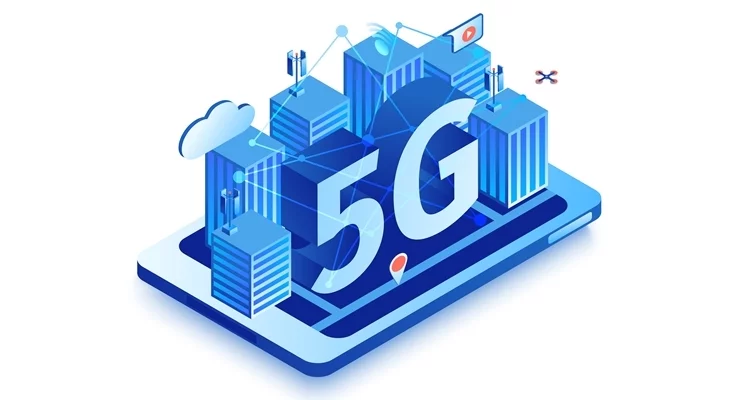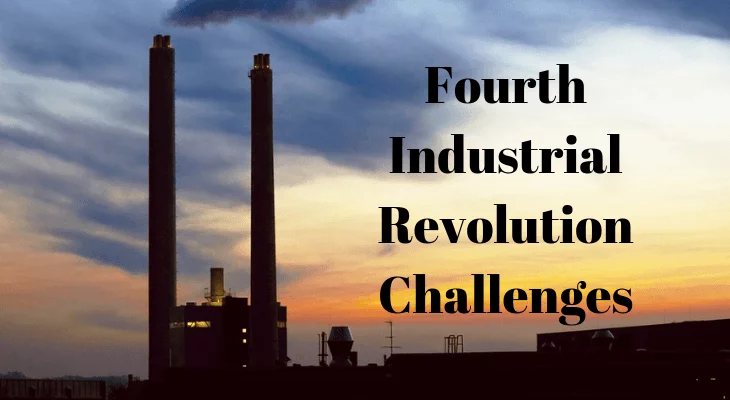With the upcoming of 5G, the most important question arises: Is 5G An Issue For The Environment And Human Health? In this blog, we cover various benefits and drawbacks of 5G technology. Through this blog, you'll get an idea of whether Is 5G an issue for the environment or is safe to use. Keep reading to learn more.
What is 5G
5G stands for the fifth generation of wireless technology. It is the wave of wireless technology that surpasses the 4G network currently in use. Earlier generations brought the first cell phones (1G), text messaging (2G), online capabilities (3G), and higher speeds (4G). The fifth generation aims to increase the speed of data movement. It aims to be more responsive while allowing greater connectivity of devices.
This means that 5G will allow for an almost instant download of data that would take hours with the current network. For example, downloading a movie on 5G would only take a few seconds. These new improvements will enable autonomous vehicles. It will also cause an expansion in the use of Internet of Things (IoT) devices. There would be an acceleration of new technological advances in everyday activities by a much wider range of people.
5G is not fully developed yet. But, it will consist of at least five new technologies. This tech will allow you to perform much more complicated tasks at higher speeds. The new technologies that 5G will use are the hardware that operates at much higher frequencies. Small cells, massive MIMO, beamforming, and full-duplex are another tech of 5G. By working together, these emerging technologies will expand the potential of many of the devices in use today. It will also benefit the devices of the future.
Environmental Benefits Of 5G
Lower Power Consumption And Reduced Emissions
International standards need that 5G use much less power than 4G. This means that less power is used while more data is transferred. One kilowatt-hour (kWh) of electricity spent downloading 300 high definition movies in 4G. Whereas, with 5G, one kWh can download 5,000 ultra-high definition films.
5G in conjunction with IoT will also reduce energy consumption. With 5G, devices can switch on and off when they are not needed. Demand and consumption in real-time and automatically optimize energy consumption.
5G will enable more people to work or access entertainment remotely. This would also avoid commutes and flights. It will save energy and reduce greenhouse gas emissions from vehicles and airplanes.
When driving is a necessity, 5G can save time, fuel, and vehicle emissions. This would reduce traffic jams and idle. With sensors and cameras, 5G uses real-time data to keep traffic flowing. It also can change traffic lights to avoid delays.
Reduce Food And Water Waste
Smart Water Sensors
Smart water sensors can detect leaks, water pollution. Pollution Sensors can also optimize agricultural water use. Arable, an innovative agricultural company, uses intelligent agricultural sensors. These sensors use meteorological, soil, and crop information. It helps to better manage irrigation and make it more efficient. The system also tracks plant stress, nutrients, and pests to aid in harvest planning.
Reduce Food Waste
It is estimated that approximately, one-third of the world's food is wasted. This also wastes energy and water. Agricultural sensors can ensure crops are harvested correctly in time. Other sensors can detect freshness and spoilage of food. This way, consumers know when food is safe to consume without having to rely on the expiration date.
Food Tagging and Tracking
5G could be used to tag all food where it's made, track harvest dates, or identify specific animals. It can then track smart tags as food moves into the factory. Other sensor systems could track conditions in the factory, assess food quality and compliance. An automated and transparent system could ensure that the right ingredients are delivered at the right time and packaged correctly. This would help reduce waste.
Protecting Nature
Poisonous blue-green algae thrive when the water temperature is higher than normal. Nokia is using 5G drones attached with cameras and sensors over the Baltic Sea. These drones detect blue-green algae growth in real-time. Algal blooms can be detected in more remote areas. Obtaining information on time enables experts to take quick action. It thus avoids such environmental hazards.
Australian startup Myriota and the Australian Institute of Marine Sciences use marine buoys. These buoys connect to satellite IoT sensors to track ocean currents, ocean surface water temperature, and ocean air pressure. It tracks all this in real-time in the ocean and understands how the ocean is behaving.
5G Offers Less Interference
5G uses frequencies that are not saturated with current devices. This is not the case with 4G and 3G devices. 4G and 3G use the same spectrum and cause interference or noise.
5G avoids this by using a frequency that is currently unused. This contributes to better speeds as well as very low distortion and noise.
5G antennas are highly directional. This leads to less interference with other signals in the vicinity.
5G Offers Very Low Latency
Latency is the time delay the signal experienced on the way from a source device to the destination device. 5G has tight real-time responses between devices. It has 1-millisecond latency, while 4G latency is around 50 milliseconds.
It Has A Much Wider Bandwidth
5G has more bandwidth. Users can connect more devices to a single Internet port. This means there shouldn't be any overhead issues while connecting many internet-hungry devices to a single router. This is very beneficial for smart homes. It can host many devices that need internet access through the same router.
Negative Environmental Impacts Of 5G
Increase In Greenhouse Gas Emissions
There is an increase in greenhouse gasses emitted. This is is partly because of the need for consumers to buy new 5G phones to take advantage of the technology. A study calculated that a smartphone produces 45 kg of CO2 during its life. Most of the CO2 comes from the production phase. When we include accessories and networks, the total life cycle load of the smartphone comes out to be 68 kg of CO2.
E-Waste
As an increasing number of people transition to 5G phones, many older devices will be abandoned. This would generate massive volumes of e-waste, which is already a major global issue.
Radiation
The full use of 5G could have a disruptive effect on ecosystems. A study found that sparrows exposed to radiation from cell phone towers for five to 30 minutes produced disfigured eggs.
In Spain, the breeding, reproduction of birds was disrupted by microwave radiation from a cell phone tower.
Wireless frequencies have also disrupted the navigation system and circadian rhythms of birds. This affects their migration.
Another study found that bees exposed to lower-band radiation for 10 minutes suffered from colony collapse disorder. The research found insects, including bees, are more affected by radiation from the 5G spectrum. This could lead to changes in the behavior and functions of insects over time. These studies point that 5G is an issue for the environment to some extent, to say the least.
Conclusion
While innovation continues, wireless companies around the world must consider the impact of 5G on the environment. They need to do so before pushing for widespread implementation.
The new network will bring great benefits to consumers. Still, it is important to calculate the long-term impact of 5G on the environment. This way, the risks are clearly understood and articulated.
5G developers need to conduct environmental impact assessments to understand whether 5G is an issue for the environment. They would assess the impact of the new technology on the environment, before rushing to roll it out on a large scale.
You may also like to read:
5G in Industrial Manufacturing: How Is It Transforming The Industry





